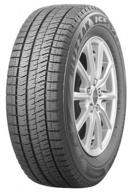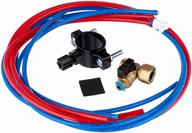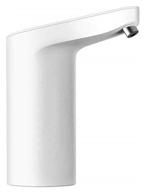
Review on ISpring RCC1UP AK Performance Filtration Remineralization by Bryan Turner

Great product and smooth installation
Installation went smoothly and took a little longer than expected but again I've never done this before. There was at least one minor bug related to a missing feed water valve which was quickly and swiftly replaced by tech support. Now I'm waiting to contact tech support again with what appears to be a non-working UVC ballast. There appear to be two indicator lights inside that will tell you if the UVC ballast is working when it is detected flowing through. However, I have never seen an indicator light up while the water is running. Some tips before proceeding to self-install this product. 1. Note the measurements to ensure proper fit: System dimensions: 14.5 x 7 dx 19 2 h. Read directions, read directions, read directions (actually I searched and downloaded the PDF version before I arrived)3. Watch the recommended YouTube videos and have them available during installation if possible. Any confusion some might have with the written instructions should be cleared up after watching the video at least a couple of times.4. Lay out all the pieces to make sure they are all in place. The system comes almost fully assembled and photos of the parts would be helpful but I would have preferred an actual listing with photos. However, the photos tell you almost exactly what is there (parts claim they are different).5. Decide where you want your reverse osmosis system to go, including the tank. Luckily I had enough space and was able to build something to hold the system in place which would also allow me to remove the filters in place or remove the entire system at once (when exiting the tank). 6. There is no need to connect a reverse osmosis faucet if you plan to connect it directly to a water dispenser or refrigerator. I did this. However, remember that you will need to flush the system before first use, so have a clean water supply line (reverse osmosis water) and at least one valve on the end to control the water flow. water.7. When priming the line for the first time, you may need to turn on the pump for this to work. I have made. According to the instructions it should not be turned on. Nothing came out, however, and when I turned on the pump, the water began to flow out very slowly. I let mine sit for at least 30 minutes before running the following steps at system startup. I had some concerns at first, but once the tank was connected the flow became more acceptable. (Sorry, flow meters were not connected). My TDS monitor readings were as follows: Input: 315 to 317 Reverse Osmosis Output: 15 to 17 This is the TDS monitor I use: HM Digital DM-1 In-Line Dual TDS Monitorhttps://www. amazon.com/gp /product/B001EHAZGW/ref=od_aui_detailpages02?ie=UTF8&psc=1 If I had to do it all over again, I would choose the off-the-shelf iSpring RCS5T 500 GPD (https://www.amazon.com/iSpring-RCS5T -Commercial-Tankless - Reverse/dp/B00PCRSD7I/ref=cm_cr_arp_d_product_sims?ie=UTF8). This device comes without a tank but has a frame. It would really save time and I value my time!
- Water filter and softener
- Older model
New products
Comments (0)
Top products in 💧 Water Purification
Another interesting products

NANPU 3/8" NPT Compressed Air Filter Regulator Combo Piggyback, 5 Micron Brass Element, Poly Bowl, Semi-Auto Drain, Metal Bracket, 0-150 Psi Gauge

26 Review
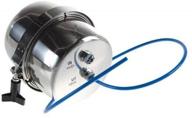
Filter under the sink Aquaphor Favorit ECO silver

20 Review
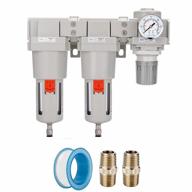
NANPU Air Drying System With Double Filters And Pressure Regulator Combo For Clean And Controlled Air Supply

18 Review
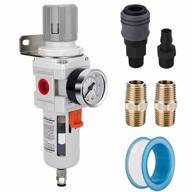
NANPU Compressed Air Filter Regulator Combo: Brass Element, Semi-Auto Drain, 0-150 Psi Gauge, And More

21 Review


